Stairs serve not only to overcome elevation changes but often rank among the notable structures of their cities. The Spanish Steps in Rome with its 135 steps has connected two districts since 1725 and became a meeting point for locals and visitors. In Montmartre, 222 steps lead to the Basilica of Sacré-Cœur, while Jacob's Ladder on Saint Helena with 699 steps forms one of the longest straight stairways in the world. The selection includes various construction types: spiral staircases in medieval towers, rock-carved ascents to temples and fortresses, and modern outdoor stairs made of concrete and steel. Some stairs were built for practical reasons like the steps to Table Mountain in Cape Town, others as part of religious sites like the stairs to the Golden Rock in Myanmar. Each staircase tells the story of the engineering skills of its era and the people who use it daily.
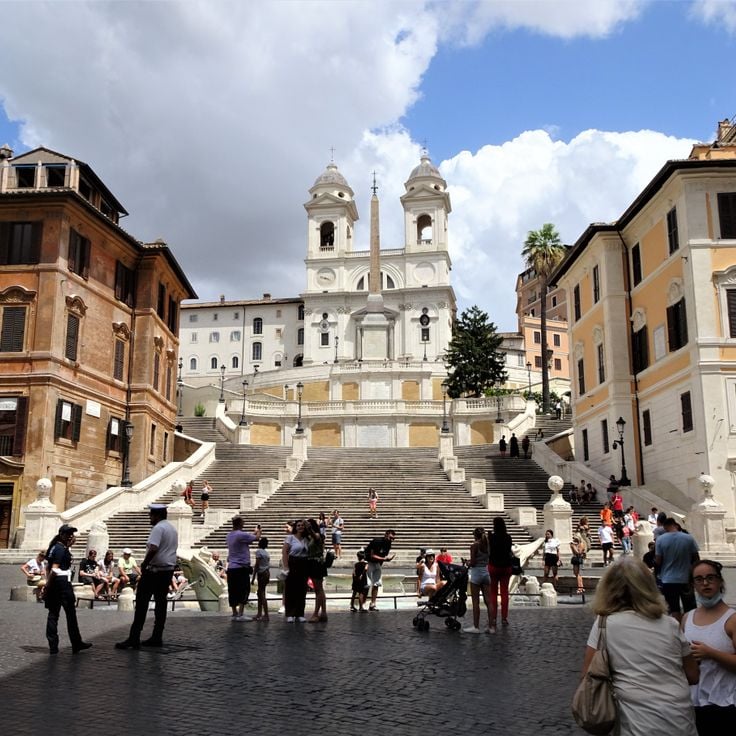
Rome, Italy
The Spanish Steps were built between 1723 and 1726 following designs by Francesco de Sanctis and Alessandro Specchi. This monumental outdoor staircase connects Piazza di Spagna with the church of Trinità dei Monti atop the Pincian Hill. The 135 steps form one of Rome's most recognizable stairways and have served as a meeting place for visitors from around the world for centuries.

Oahu, Hawaii, USA
The Haiku Stairs traverse the steep ridge of Mount Puukeahiakahoe on the island of Oahu. This metal staircase comprises 3922 steps and was originally constructed during World War II to access antenna masts for military radio communication. The structure extends over several kilometres and ascends through considerable elevation changes across the mountainous terrain of the island.

Abhaneri, India
The Chand Baori is a 9th-century stepwell that descends 13 storeys into the ground. The geometric structure contains approximately 3500 symmetrically arranged steps that form precise rows on three sides leading down to the water reservoir. This monumental construction served as a water source in the arid region of Rajasthan while providing a cool retreat during hot months.
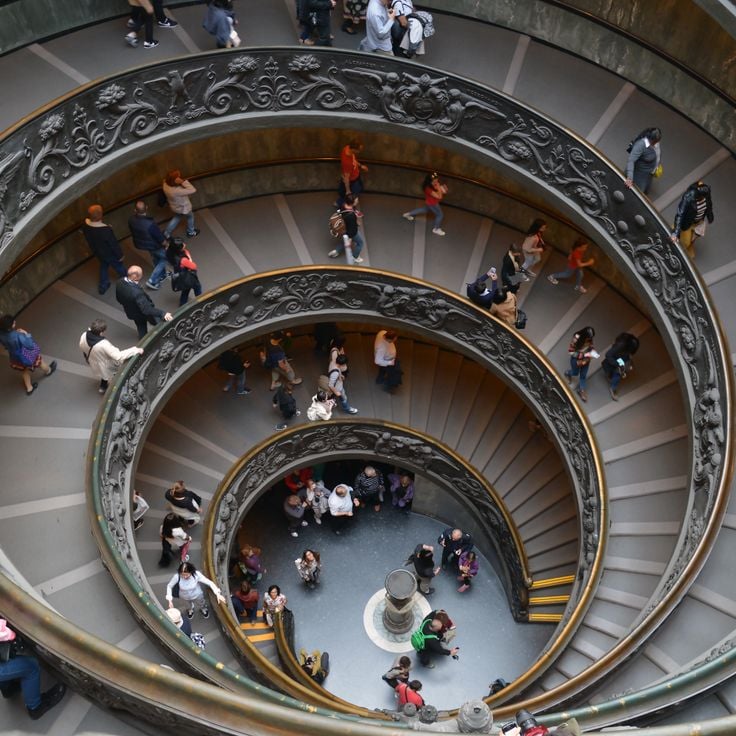
Vatican City
The Vatican Museum Spiral Staircase consists of two intertwined helix structures made of stone that connect the exit with the entrance. This architectural construction allows visitors to ascend and descend simultaneously without crossing paths. The staircase was designed by Giuseppe Momo in the early 20th century and demonstrates precise geometric execution with continuous handrails and regular steps.

Greenwich, England
The Tulip Stairs at Queen's House represent the first cantilevered spiral staircase built in England. This 17th-century geometric construction was completed between 1635 and 1638, and takes its name from the tulip pattern featured in its wrought iron balustrade. The staircase connects the different levels of the royal residence and demonstrates the advanced architectural capabilities of the period.
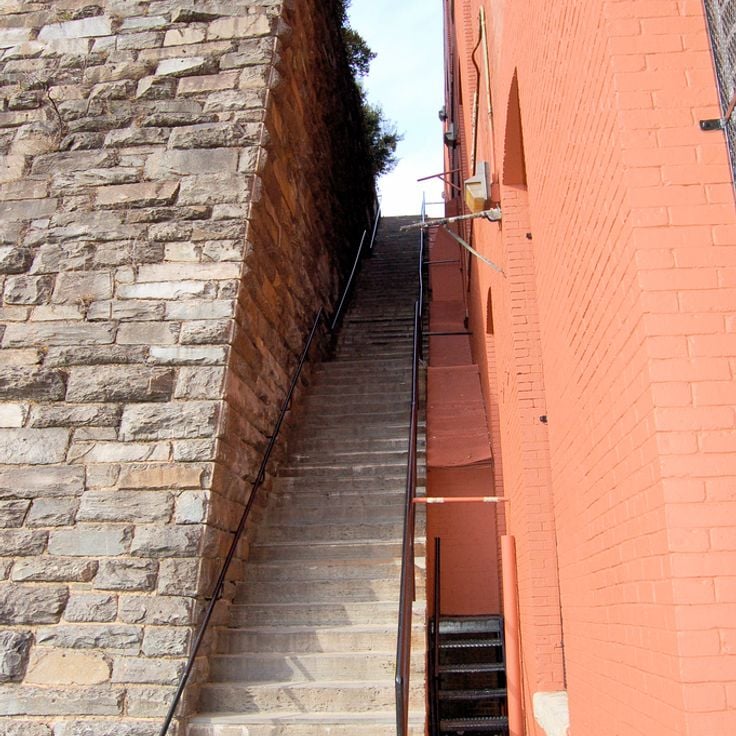
Washington D.C., USA
The Exorcist Steps are a steep stone staircase in Georgetown that gained international recognition through the 1973 horror film. The steps connect M Street to Prospect Street, descending alongside the wall of Georgetown University. Consisting of 75 steps, they serve as a public thoroughfare in the historic neighborhood.
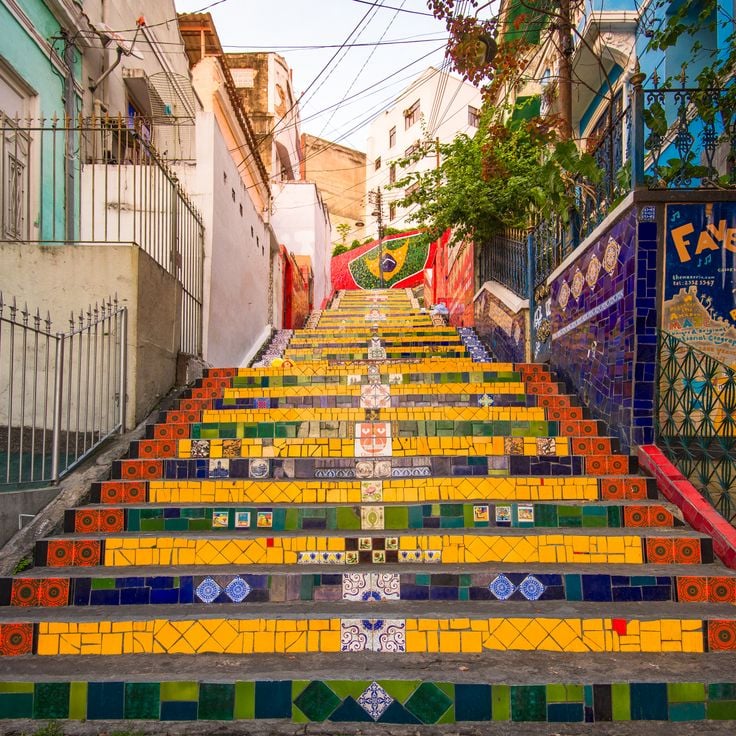
Rio de Janeiro, Brazil
The Escadaria Selarón connects the Lapa and Santa Teresa neighborhoods through 215 steps. Chilean artist Jorge Selarón began decorating this staircase in 1990, transforming it over more than two decades into a mosaic featuring over 2,000 tiles from 60 countries. The colors yellow, green, and blue dominate the work, reflecting the Brazilian flag.
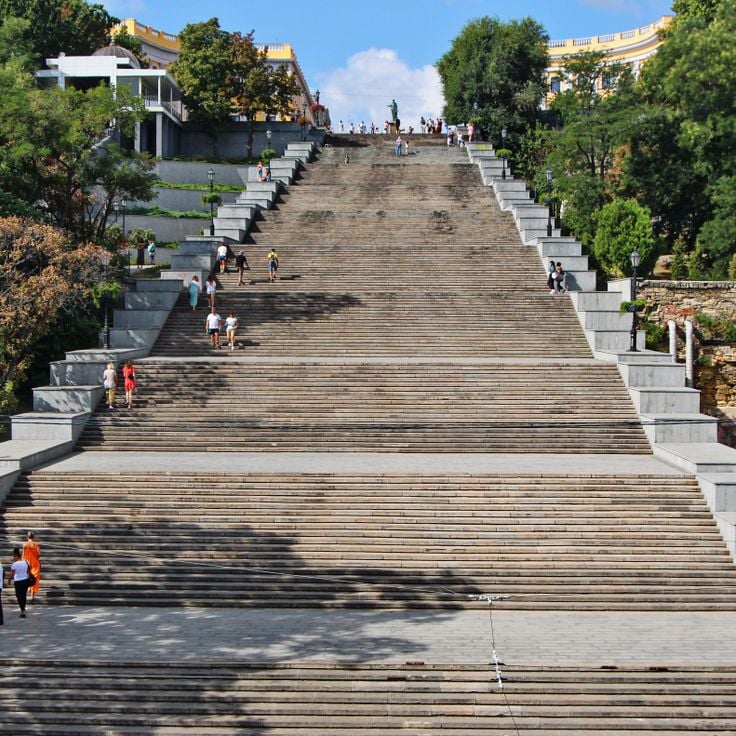
Odesa, Ukraine
The Potemkin Stairs connect the harbor with the city center of Odesa and feature 192 steps. Their particular construction creates an optical illusion: viewed from above, only the landings are visible, while from below only the steps can be seen. Built between 1837 and 1841, the stairs are named after Russian Prince Grigory Potemkin and serve as an access route to the city center.
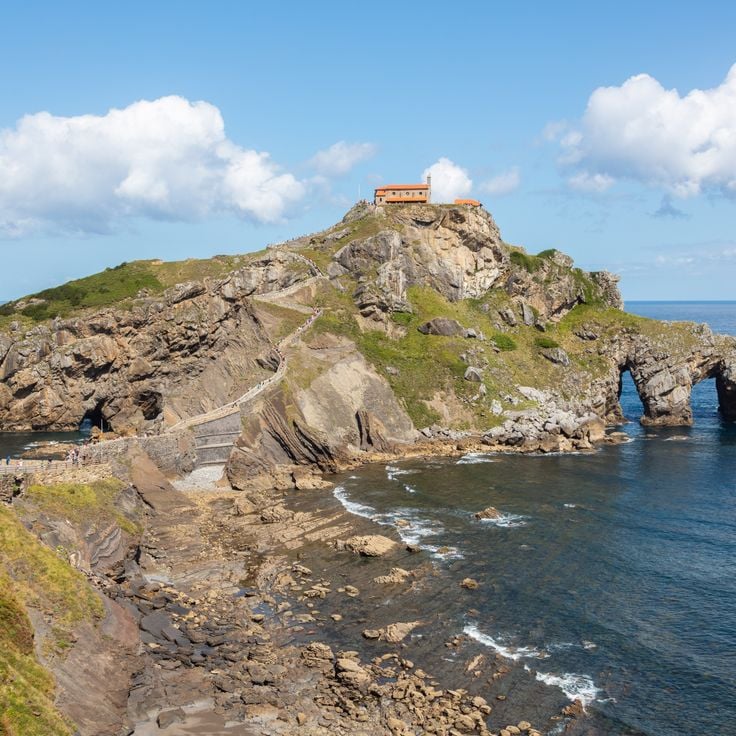
Basque Country, Spain
The San Juan de Gaztelugatxe Steps comprise 230 stone stairs that connect the rocky coastal path to the small hermitage at the island summit. This 10th-century chapel dedicated to John the Baptist sits atop a dramatic rock promontory in the Bay of Biscay. The ascent provides views of the Cantabrian coastline and the rugged cliffs of the Vizcaya region. The site served as the filming location for Dragonstone in the television series Game of Thrones.
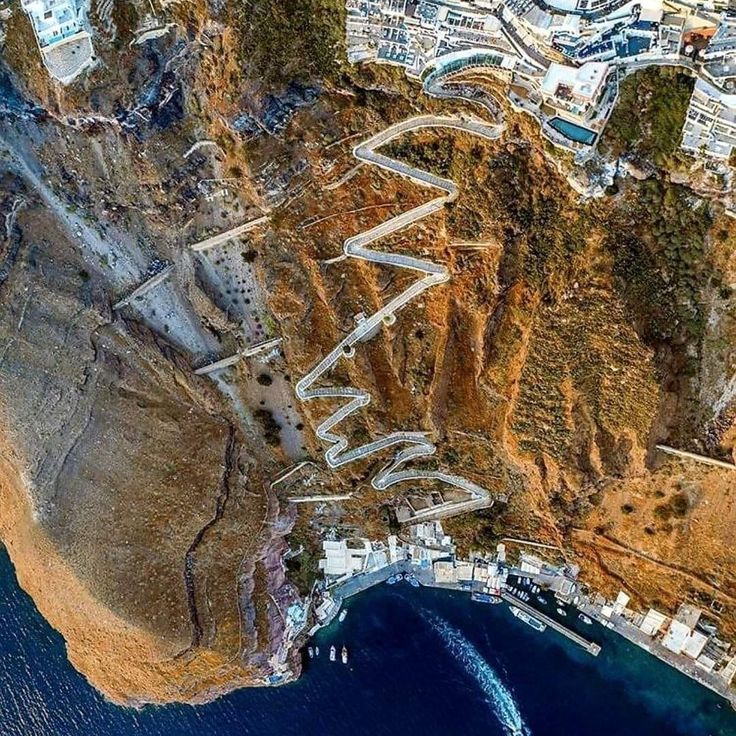
Santorini, Greece
The Santorini Steps are white stone stairs connecting the town of Fira to the old harbor below. This traditional staircase comprises several hundred steps winding down the cliff face. Mules have been used for decades to transport goods and visitors' luggage between the harbor and the town above. The steps provide an alternative to the cable car and offer direct access to the port for cruise passengers and tourists visiting the island.

Lysefjord, Norway
The Flørli 4444 is a wooden staircase consisting of exactly 4444 steps running parallel to a historic water pipeline along the Lysefjord. This structure was originally built for maintenance access to the piping system of the Flørli hydroelectric power station and is recognized as the longest continuous wooden stairway in the world. The construction ascends 740 meters from the fjord shore to the mountaintop where the former power plant facility is located.

Siem Reap, Cambodia
The stairs of Angkor Wat ascend via steep stone steps with a 70-degree incline to the central tower of the temple. These steps were constructed in the 12th century as part of Khmer architecture and represent the spiritual ascent to Mount Meru, the mythical center of the universe in Hindu and Buddhist cosmology. The steep angle requires concentration during ascent and descent, reinforcing the symbolic meaning of effort on the path to enlightenment.
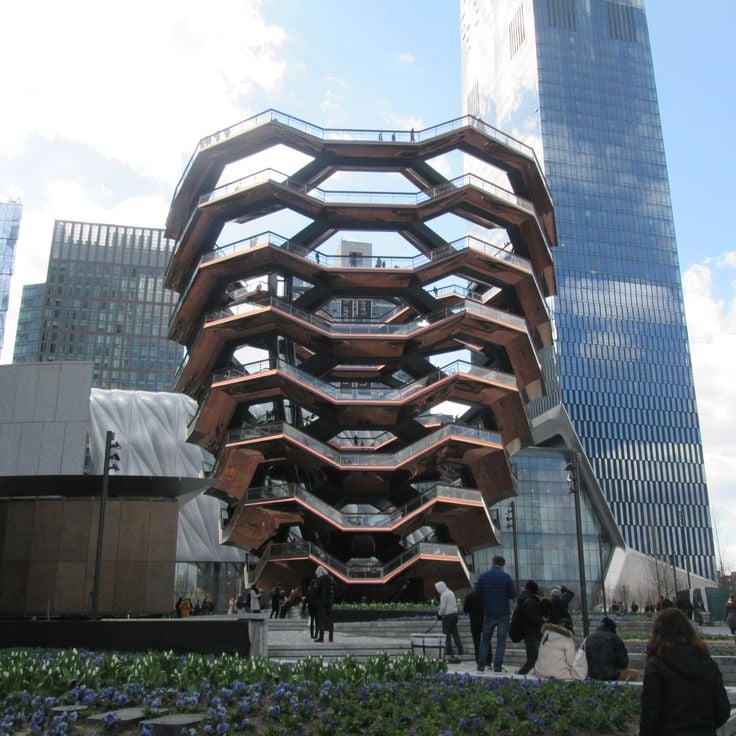
New York City, USA
The Vessel is a construction located in the Hudson Yards neighborhood of Manhattan. This climbable sculpture consists of 154 interconnected flights of stairs spanning 80 landings and rising to a height of 45 meters. Visitors can ascend a total of 2500 steps while exploring the geometric structure made of bronze-toned steel. The building was designed as a public viewing point, offering various perspectives of the surrounding neighborhood. The honeycomb-shaped architecture was created by British designer Thomas Heatherwick.
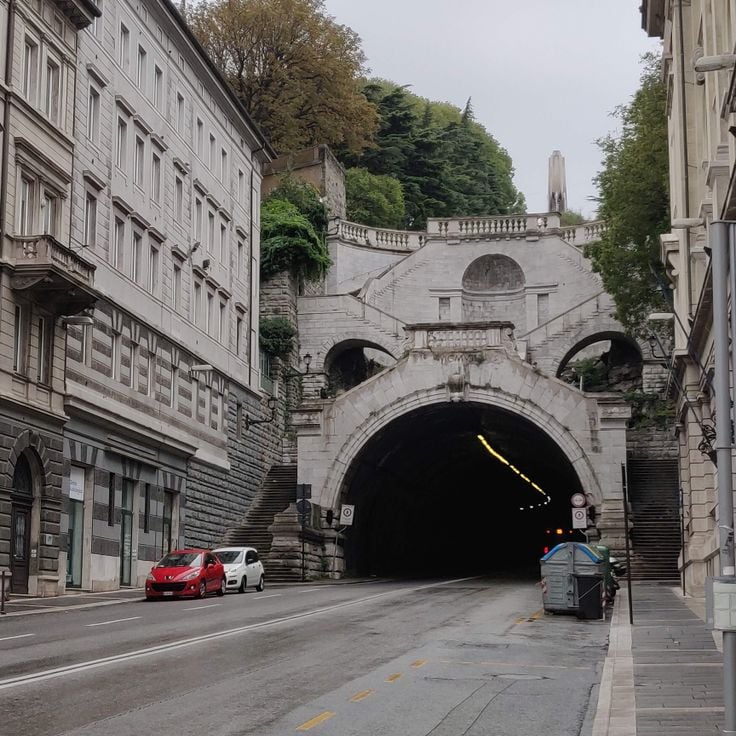
Venice, Italy
Ceremonial marble staircase from the 15th century with two large statues of Mars and Neptune on the sides.
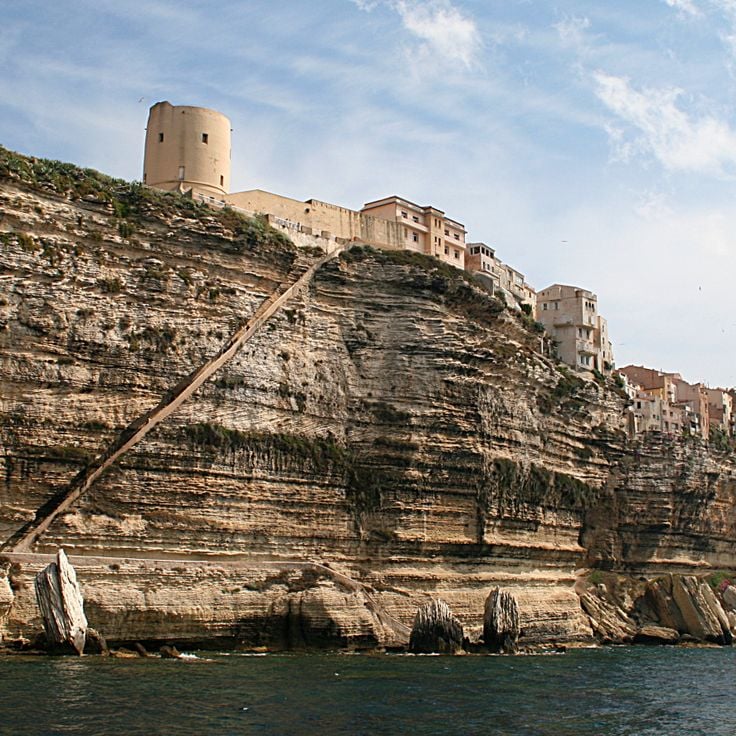
Bonifacio, Corsica, France
The Staircase of the King of Aragon connects the sea to the plateau of Bonifacio through 187 limestone steps with a 45-degree incline. This staircase was carved into the cliff during the 15th century siege of the town by Aragonese forces. The steep ascent follows a natural fissure in the rock face and provides access to the citadel.
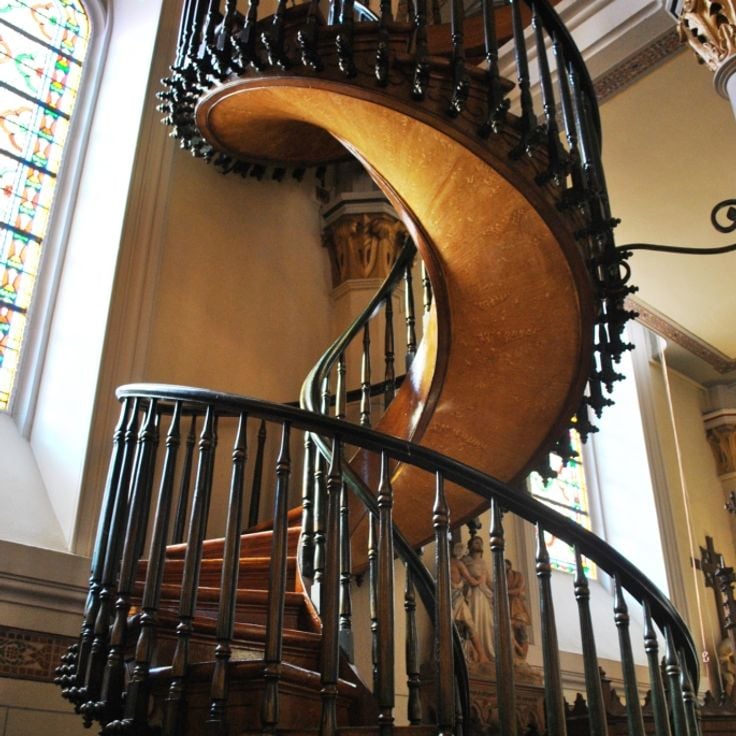
Santa Fe, New Mexico, USA
This wooden staircase at Loretto Chapel completes two full 360-degree turns without a central support column. The construction employs wooden pegs rather than nails to join the components. Built in the late 19th century, the spiral staircase provides access to the choir loft of the chapel. Its design without a visible central support pole represents a technical curiosity in carpentry.
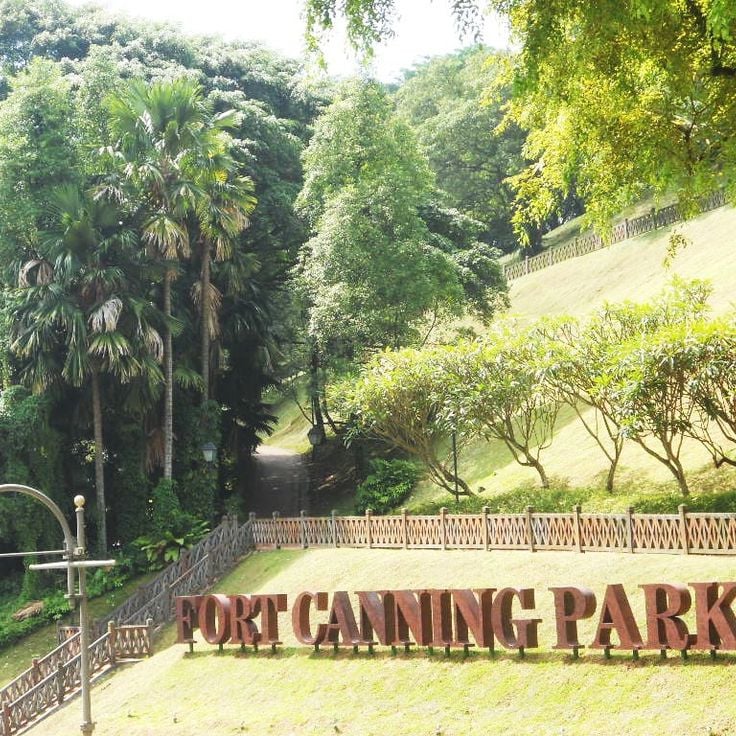
Singapore
The Fort Canning Spiral Staircase features two intertwined metal staircases rising through Fort Canning Park. This architectural structure connects different levels of the historic park while surrounded by dense tropical vegetation. The double helix design forms a functional sculptural element within this central green space in Singapore's urban landscape.
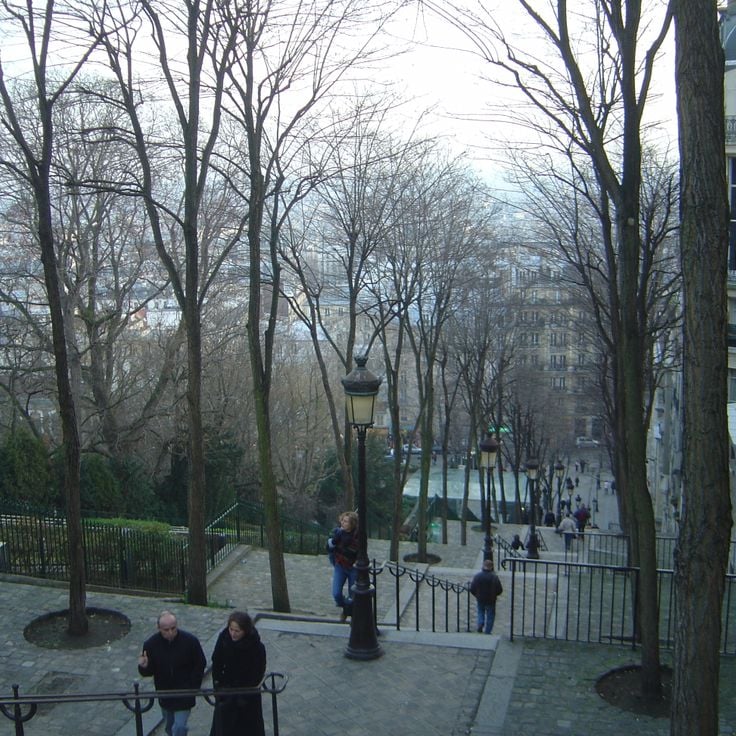
Paris, France
The Rue Foyatier Staircase in Paris connects Boulevard de Rochechouart to the Sacré-Cœur Basilica atop Montmartre hill. This stone staircase comprises several hundred steps and provides rest benches every thirty steps for visitors. The staircase was constructed in the late 19th century and serves as a direct ascent to the basilica.
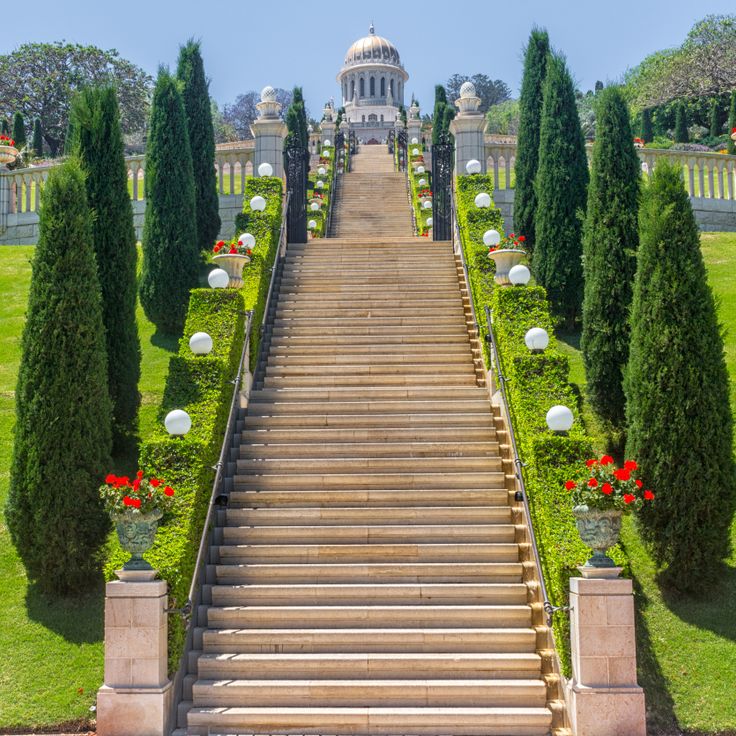
Haifa, Israel
The Baha'i Gardens Staircase connects 19 terraces with geometrically designed gardens extending from the base to the summit of Mount Carmel. The structure leads to the Shrine of the Bab, the central holy site of the Baha'i faith in Haifa. Each terrace features flower beds, fountains, and maintained lawns arranged in symmetrical patterns. The stairway offers views of the city and Haifa Bay.
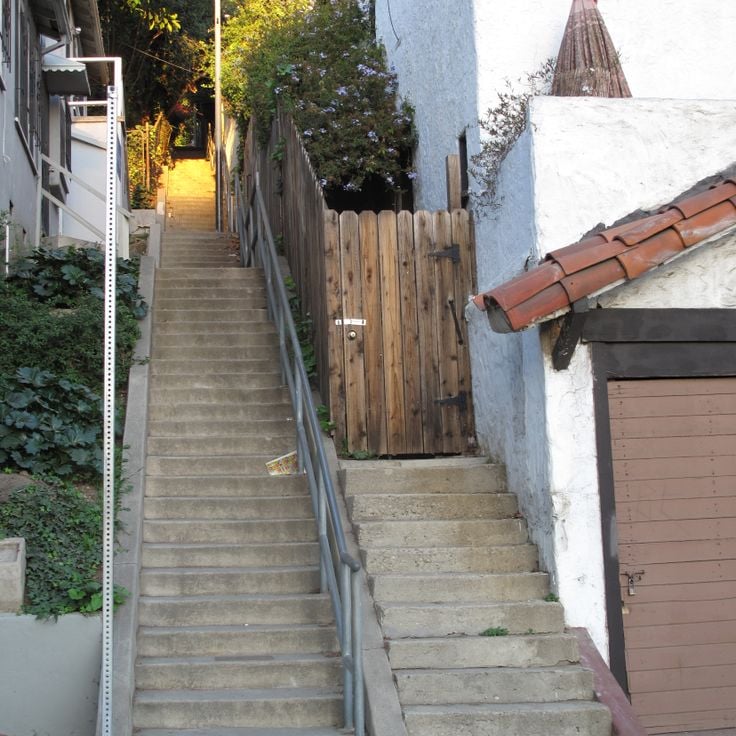
Los Angeles, California, USA
The 131 steps appeared in the 1932 film The Music Box where a piano was carried up these stairs.
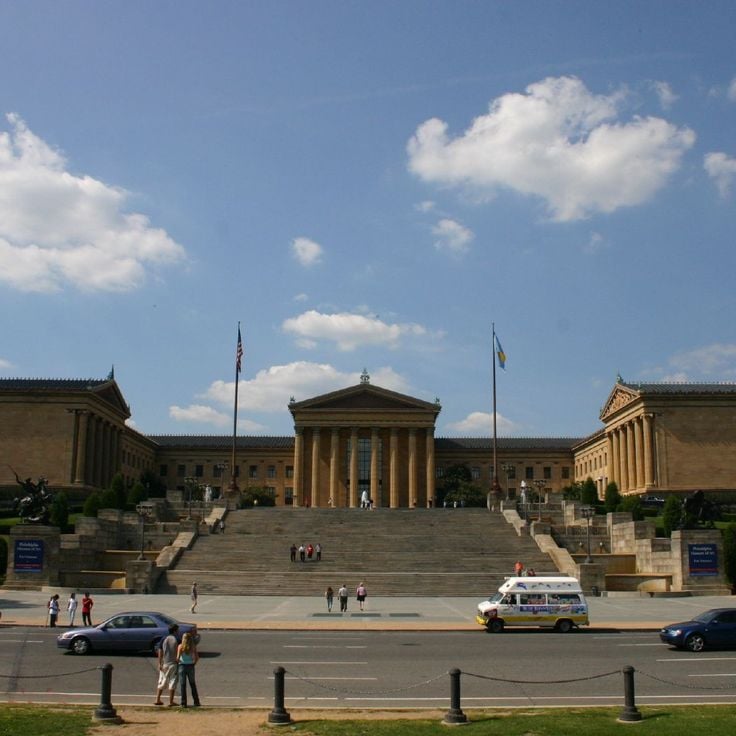
Philadelphia, Pennsylvania, United States
The Rocky Steps are a stone staircase with 72 steps located in front of the Philadelphia Museum of Art. This staircase became famous worldwide through the 1976 film Rocky, in which Sylvester Stallone's character ran up the steps during his training sequences. Today, visitors from around the world come to these steps to recreate the boxer's workout and take photographs at the top, where a bronze statue of Rocky Balboa stands.
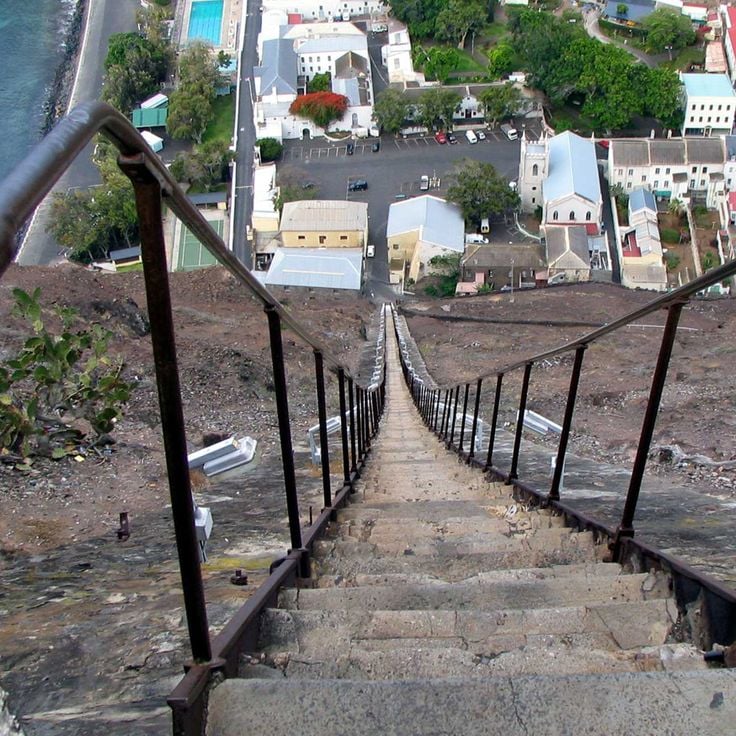
Saint Helena, British Overseas Territory
Jacob's Ladder is a metal staircase with 699 steps that connects Jamestown to the upper part of Saint Helena Island. The structure climbs 183 meters in elevation and was originally built in 1829 as a supply route to Half Tree Hollow Fort. Today it serves as a direct pedestrian route between the harbor area and the residential districts on the upper levels of the island.
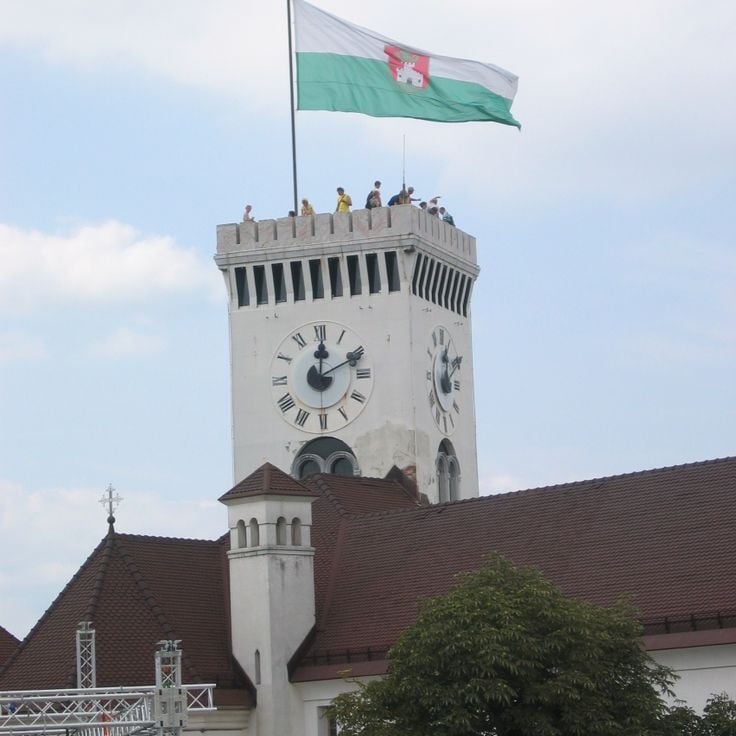
Ljubljana, Slovenia
This 15th century stone spiral staircase ascends through the medieval tower of Ljubljana Castle. The steps connect multiple levels of the fortress, which stands on a hill overlooking the city center. The architecture displays typical features of late medieval defensive structures in this region of Slovenia.

Matale, Sri Lanka
The Sigiriya staircase ascends a 200-meter granite rock and passes through massive stone lion paws carved in the 5th century. The climb connects the water gardens at the base with the royal palace remains and frescoes at the summit. The construction integrates architecture with the natural rock formation and served as the monumental entrance to King Kassapa's ancient fortress.
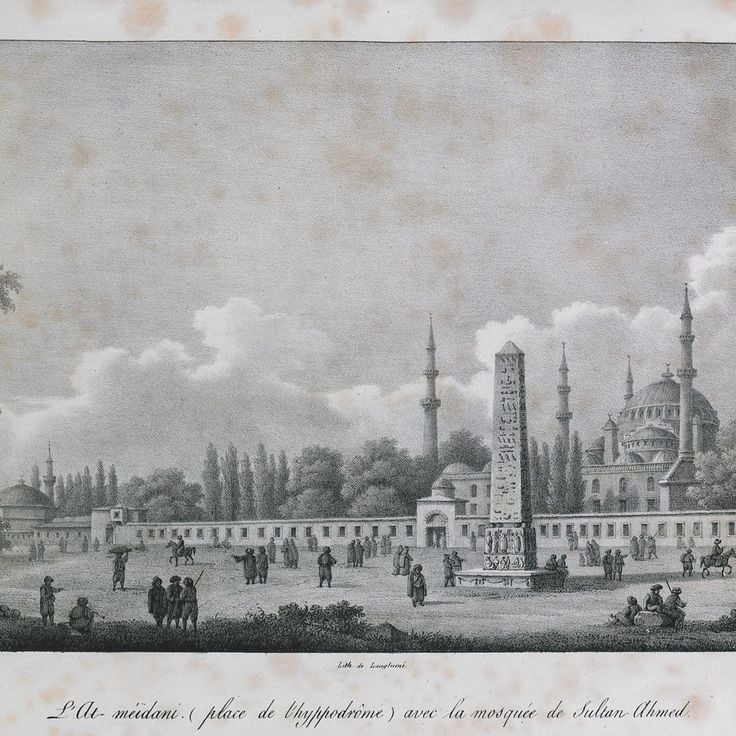
Istanbul, Turkey
These stone steps from the Byzantine period lead to the entrance of the ancient Hippodrome of Constantinople. The stairway connects different levels of the historical site and provided access to the arena where chariot races and public events took place. The construction displays typical Byzantine building techniques with hewn stone blocks and documents the urban organization of Constantinople at that time.
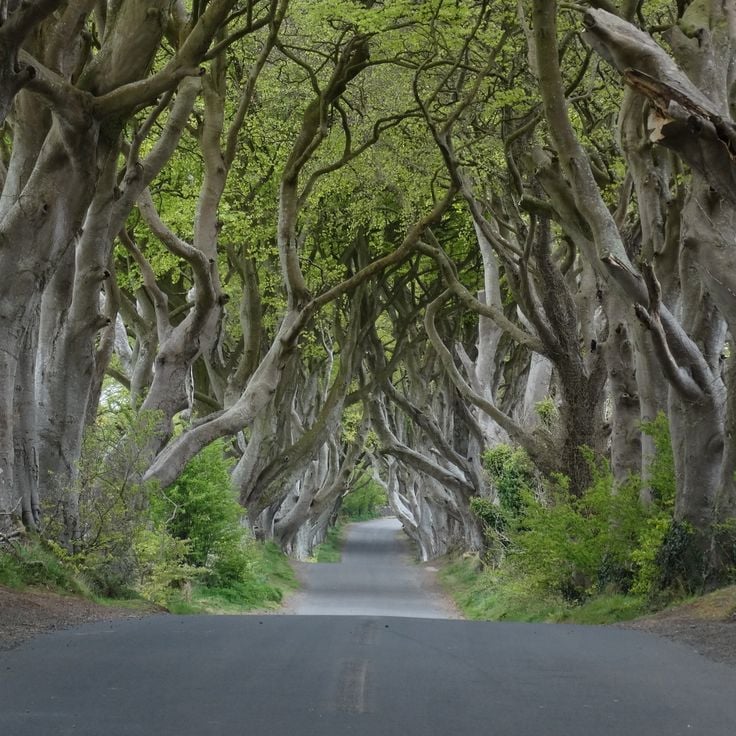
Antrim, Northern Ireland
The Stone Steps of Dark Hedges form a pathway through an avenue of centuries-old beech trees that line a narrow forest route. These steps connect with the natural surroundings, creating a sheltered passage beneath the intertwined branches of the trees. The path was originally established in the 18th century by the Stuart family and now serves as an access route through this historic woodland area in County Antrim.
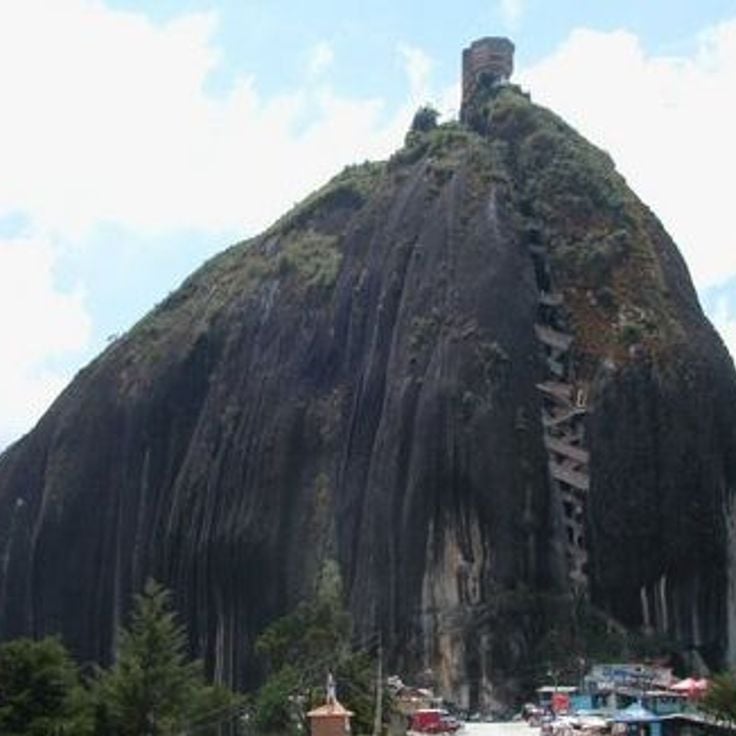
Guatapé, Colombia
The El Peñol Stone Steps are carved directly into the granite monolith and ascend 649 steps to reach the summit of this rock formation. The climb zigzags through a narrow fissure in the stone and provides views of the Guatapé Reservoir and the surrounding Antioquia landscape along the way to the top.

Paris, France
The Longchamp Racecourse Steps were constructed in the 1920s and are located in the main building of the horse racing track. This stone staircase features geometric patterns typical of the architectural style of that period. The structure connects different levels of the building and serves as a functional element within the facility.
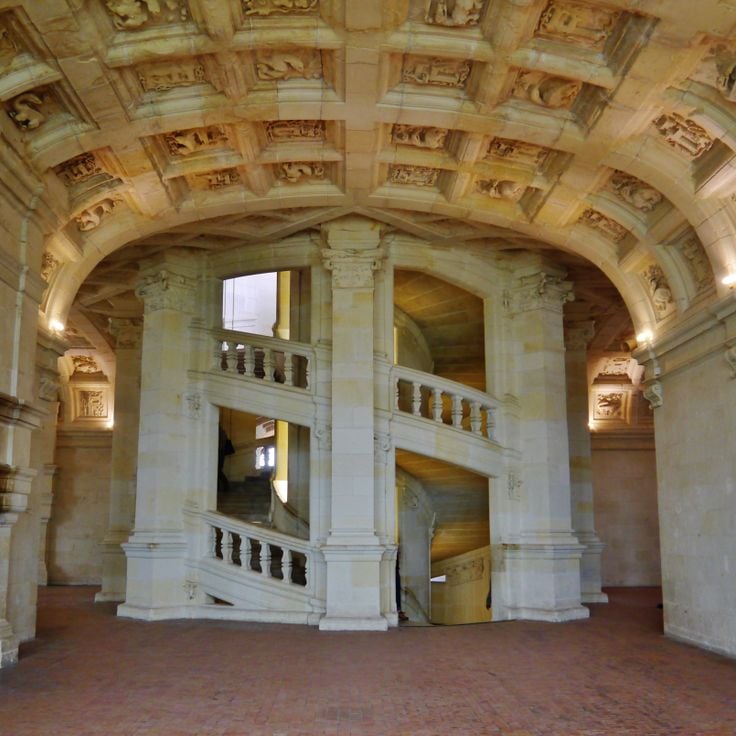
Chambord, France
The Double Helix Staircase of Château de Chambord represents the architectural centerpiece of this Renaissance castle in the Loire Valley. This central spiral staircase consists of two separate helical flights that wind around a shared column without ever crossing paths. The design allows two people to ascend and descend simultaneously without meeting each other. This engineering achievement is often attributed to Leonardo da Vinci, who may have been involved in the castle's design plans.